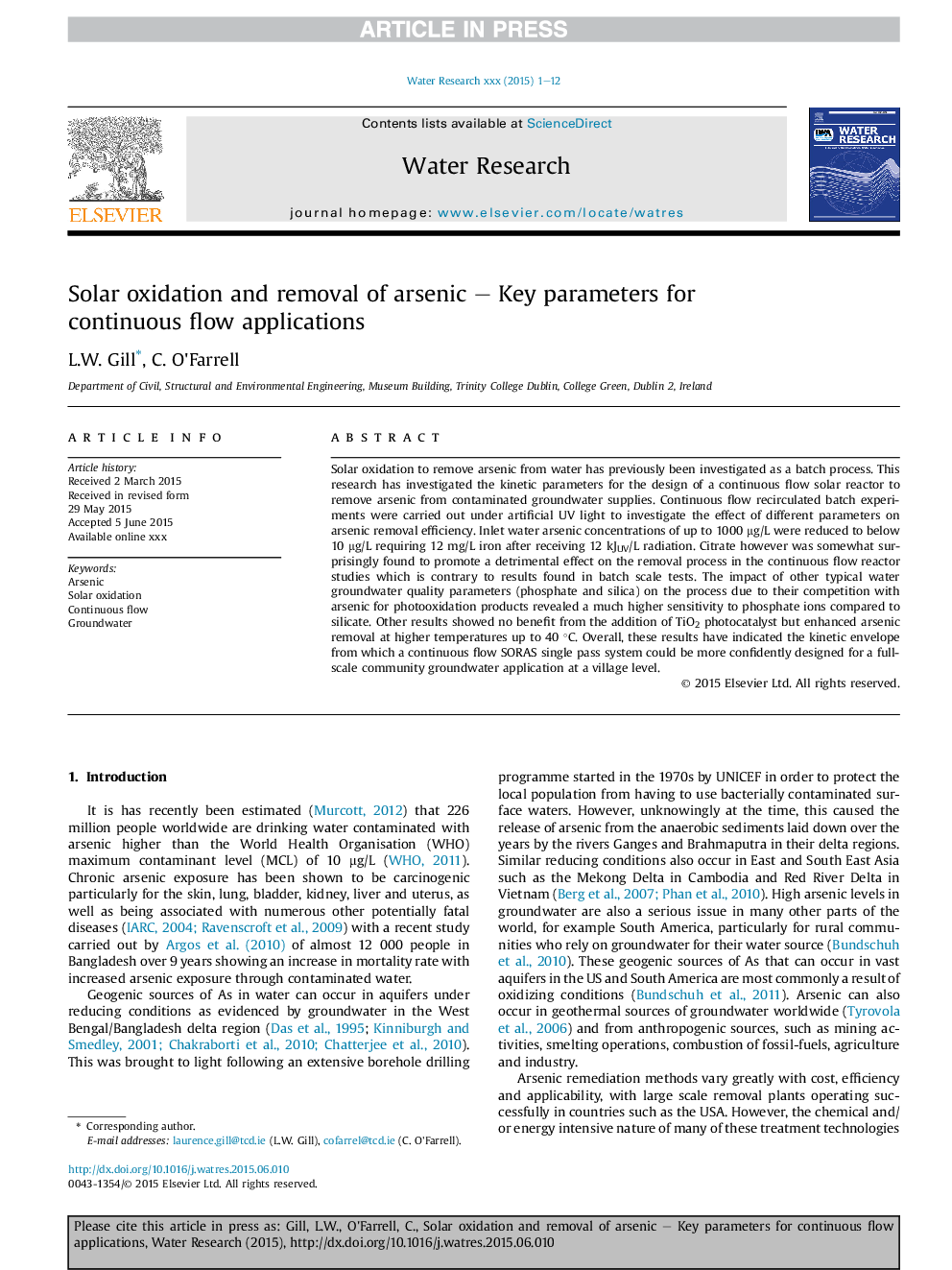| Article ID | Journal | Published Year | Pages | File Type |
|---|---|---|---|---|
| 6365636 | Water Research | 2015 | 12 Pages |
Abstract
Solar oxidation to remove arsenic from water has previously been investigated as a batch process. This research has investigated the kinetic parameters for the design of a continuous flow solar reactor to remove arsenic from contaminated groundwater supplies. Continuous flow recirculated batch experiments were carried out under artificial UV light to investigate the effect of different parameters on arsenic removal efficiency. Inlet water arsenic concentrations of up to 1000 μg/L were reduced to below 10 μg/L requiring 12 mg/L iron after receiving 12 kJUV/L radiation. Citrate however was somewhat surprisingly found to promote a detrimental effect on the removal process in the continuous flow reactor studies which is contrary to results found in batch scale tests. The impact of other typical water groundwater quality parameters (phosphate and silica) on the process due to their competition with arsenic for photooxidation products revealed a much higher sensitivity to phosphate ions compared to silicate. Other results showed no benefit from the addition of TiO2 photocatalyst but enhanced arsenic removal at higher temperatures up to 40 °C. Overall, these results have indicated the kinetic envelope from which a continuous flow SORAS single pass system could be more confidently designed for a full-scale community groundwater application at a village level.
Keywords
Related Topics
Physical Sciences and Engineering
Earth and Planetary Sciences
Earth-Surface Processes
Authors
L.W. Gill, C. O'Farrell,
